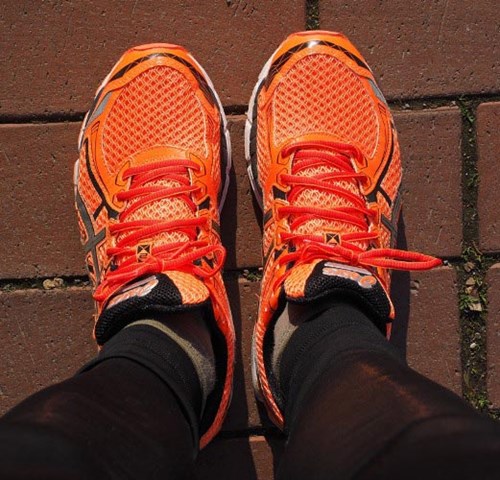Leeds runner back on her feet following step ahead surgery
28 September 2018
It’s a condition that’s becoming increasingly common in middle aged women. Morton’s neuroma is a painful ailment of the foot, which can be caused by years of wearing high-heeled or tight-fitting shoes. The pain is often so debilitating that patients become anxious about walking or even putting their foot on the ground.
Sometimes described as feeling as if you are walking on a sharp pebble in your shoe, and having persistent pain in the ball of your foot, Morton’s Neuroma is an injury to the nerve between the toes, which leads to thickening of the nerve and can cause excruciating pain.
According to the American Academy of Orthopaedic Surgeons, women are eight to 10 times more likely than men to suffer from this condition, and UK statistics by the Health and Social Care Information Centre show that diagnoses in women aged 40 - 69 has risen by 115% since 2004. *
It can also stop runners in their tracks. Professor Nick Harris, a consultant orthopaedic and trauma surgeon, with a special interest in foot and ankle disorders at Spire Leeds Hospital, says he is seeing an increase in the condition among runners, possibly because of the pressure on the toes that occurs when running. Treatment options vary and, in some cases, surgery is the only choice.

That was the case with Victoria H, a management accountant from Ossett, and one of the latest to have surgery for the condition at Spire Leeds Hospital. The married mum of two, was training for a half marathon when she noticed pain in her right forefoot. The pain was initially burning in nature and she noticed some numbness in the toes. It worsened when running and she started to experience pain when wearing high heels.
Victoria said, “The ball of my foot was extremely painful with a burning sensation and two toes felt completely numb. The pain worsened to the point I was forced to stop running and could hardly walk. Every step was painful. I felt desperate.”
After doing some research, Victoria booked an appointment at Spire Leeds Hospital with consultant orthopaedic and trauma surgeon, Professor Nick Harris, who specialises in foot and ankle disorders.
An MRI and ultrasound scan revealed Morton’s neuroma. “It was an easy decision to have surgery, as I had tried other treatment options such as injections, which hadn’t worked,” she said.
Victoria underwent surgery in May 2018. She was able to go home on the same as the surgery, using crutches and special shoes for the first 10 days - which meant she could walk on her heel, was able to drive and was back at work three weeks later.
Professor Harris said, “The incidence of Morton’s neuromas in my practice is definitely increasing. The exact cause is unknown, however, it may be caused by the nerve being compressed, stretched or damaged.”
Treatment options depend upon its severity. Sufferers can take steps to ease the pain including using specially designed insoles and steroid injections, but these treatments aren’t always successful. In such cases, surgery is the only option.
Professor Harris described the procedure he performed to remove the nerve, using general anaesthetic with a local anaesthetic block. “It involved entry through a dorsal incision (on the top of the foot) in between the affected toes. The deep inter metatarsal ligament was released, opening the space between the metatarsal heads. A large neuroma and surrounding bursa were identified and both were removed. The nerve was traced several centimetres back into the foot, before it was divided. The reason for this is that if the patient develops a recurrent neuroma, it should be away from the weight-bearing part of the foot, and therefore not result in recurrent symptoms.”
Professor Harris said, “Victoria had experienced symptoms for a number of years. Without surgery it is likely she would have continued with pain in her foot indefinitely. The future looks good for Victoria now. She tells me the pain has completely settled.”
Today, three months after surgery, Victoria recently returned from a walking holiday in Norway, where she covered around eight miles per day. She is building up her strength steadily on the advice of Professor Harris, and plans to start running in the near future. She said, “I’m over the moon! I’m completely pain free and looking forward to when I can start running again! Everyone who was involved in my treatment at Spire was fantastic and I cannot thank them enough.”
* https://www.rcsed.ac.uk (information taken from study presented at the Audit Symposium at Royal College of Surgeons of Edinburgh)

